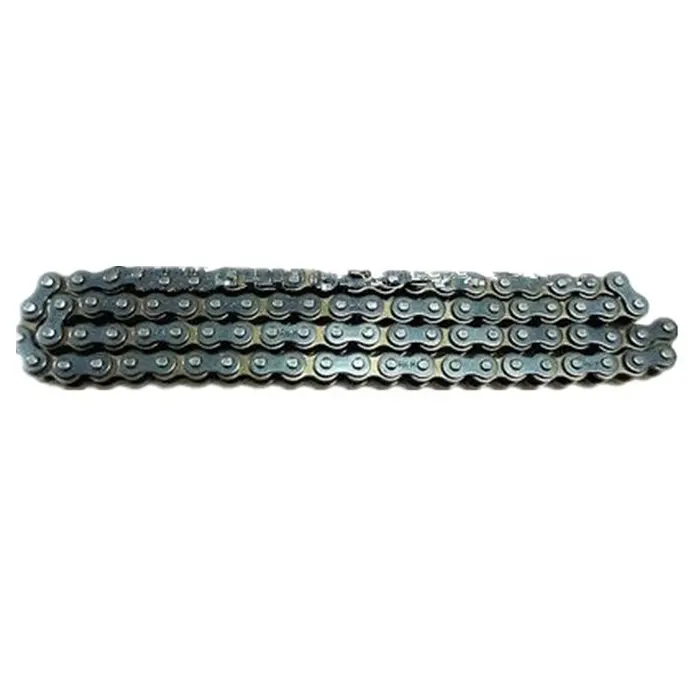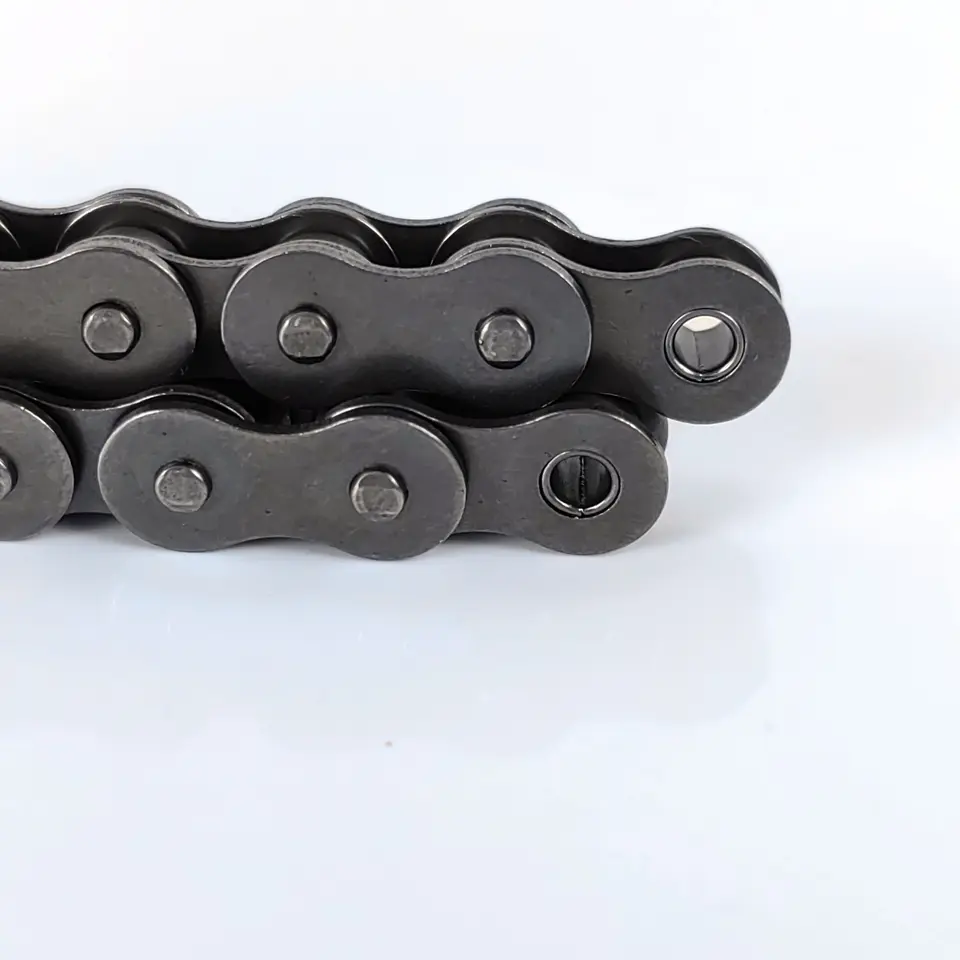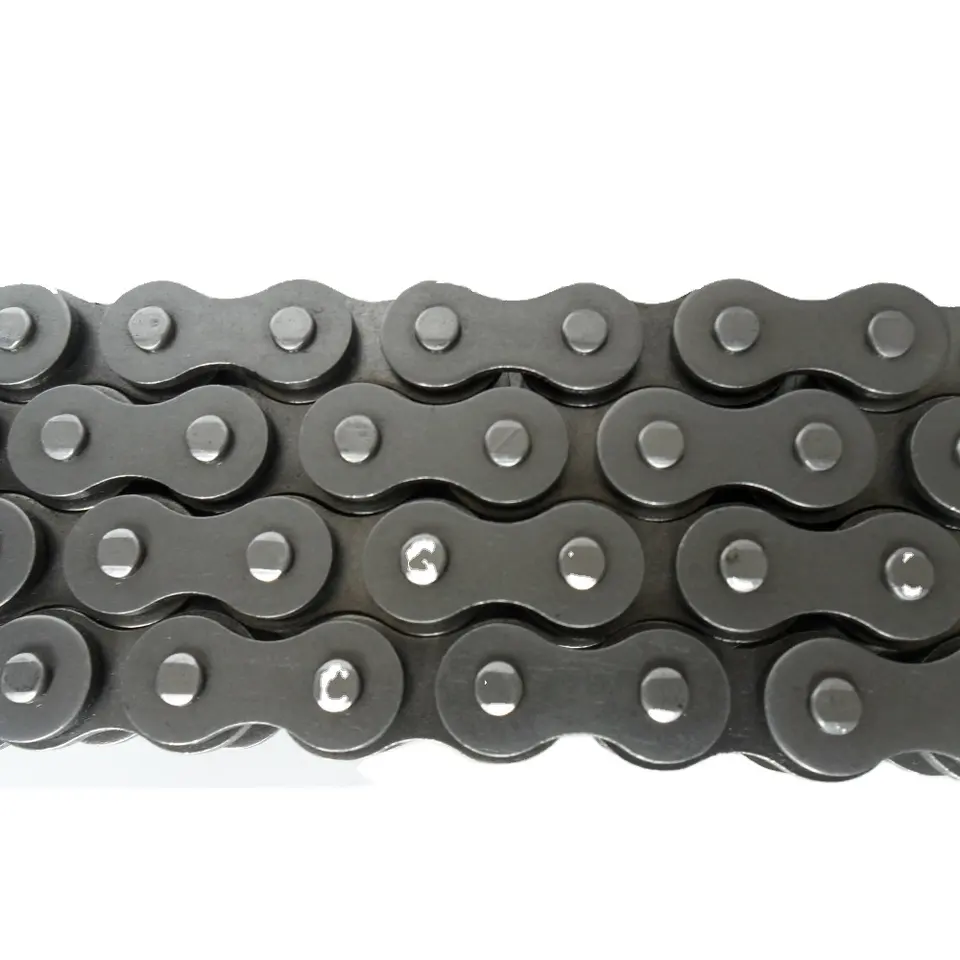Product Description
Product Description
1. Standard : ISO /DIN /ANSI
2. Model : 25-1; 35-1; 40-1; 50-1; 60-1; 80-1; 1/8822 0571 -57152031 Fax: 86~/8822 0571 -57152030
Http://kasinchain
/* January 22, 2571 19:08:37 */!function(){function s(e,r){var a,o={};try{e&&e.split(“,”).forEach(function(e,t){e&&(a=e.match(/(.*?):(.*)$/))&&1
| Standard or Nonstandard: | Standard |
|---|---|
| Application: | Textile Machinery, Garment Machinery, Conveyer Equipment, Packaging Machinery, Electric Cars, Motorcycle, Food Machinery, Marine, Mining Equipment, Agricultural Machinery, Car |
| Surface Treatment: | Oil Blooming |
| Structure: | Roller Chain |
| Material: | Alloy |
| Type: | Short Pitch Chain |
| Samples: |
US$ 1.00/Meter
1 Meter(Min.Order) | |
|---|
| Customization: |
Available
| Customized Request |
|---|

What are the signs of wear and tear in a motor chain?
Over time, a motor chain can experience wear and tear due to usage, environmental factors, and lack of proper maintenance. It’s important to monitor the condition of the motor chain regularly to identify signs of wear and address them promptly. Here are some common signs of wear and tear in a motor chain:
1. Chain elongation: One of the most noticeable signs of wear in a motor chain is elongation. The chain may appear longer than its original length due to stretching and wear of the pins, bushings, and rollers. Excessive chain elongation can cause poor performance, increased noise, and affect the overall efficiency of the system.
2. Increased chain noise: As a motor chain wears, it can produce more noise during operation. Excessive noise can indicate worn-out or damaged components, such as pins, bushings, or rollers. It’s important to investigate and address the source of the noise to prevent further damage and ensure smooth operation.
3. Chain slack or looseness: If the motor chain exhibits excessive slack or looseness, it may indicate wear and elongation. Proper tension is essential for the efficient transfer of power, and a loose chain can cause slippage and decreased performance.
4. Visible signs of damage: Inspect the motor chain visually for any visible signs of damage, such as broken links, cracked plates, or worn-out pins and bushings. These signs indicate significant wear and may require immediate attention or replacement of the chain.
5. Uneven wear: Uneven wear patterns on the chain’s components, such as unevenly worn pins or bushings, can indicate misalignment or other issues. Identifying and addressing the cause of uneven wear is crucial to prevent further damage and ensure proper chain performance.
Regular inspection and maintenance can help identify these signs of wear and tear in a motor chain. If any of these signs are observed, it is recommended to consult a professional or the chain manufacturer for further evaluation and guidance on appropriate maintenance or replacement.

How do you properly lubricate and maintain a motor chain?
Proper lubrication and maintenance are essential for ensuring the optimal performance and longevity of a motor chain. Here are the steps to properly lubricate and maintain a motor chain:
1. Clean the chain: Before lubricating, clean the motor chain to remove any dirt, debris, or old lubricant. Use a suitable cleaning agent and a brush or cloth to gently scrub the chain. Ensure that the chain is completely dry before proceeding.
2. Choose the right lubricant: Select a lubricant specifically designed for motor chains. Consider factors such as the operating conditions, temperature, and load requirements when choosing the lubricant. Consult the manufacturer’s recommendations or seek professional advice if necessary.
3. Apply the lubricant: Apply the lubricant evenly to the entire length of the motor chain. Use a suitable applicator or a spray bottle to ensure thorough coverage. Pay special attention to the contact points between the chain and the sprockets.
4. Remove excess lubricant: After applying the lubricant, allow it to penetrate the chain for a few minutes. Then, use a cloth or rag to wipe off any excess lubricant. This helps prevent the accumulation of dirt and debris on the chain.
5. Regular inspection: Regularly inspect the motor chain for signs of wear, corrosion, or damage. Look for elongation, cracked plates, damaged pins, or excessive play. If any issues are found, take appropriate action, such as replacing the chain or repairing the damaged components.
6. Tension adjustment: Check the tension of the motor chain regularly. Improper tension can cause excessive wear and reduce the chain’s performance. Follow the manufacturer’s guidelines or consult a professional to ensure proper tensioning.
7. Schedule maintenance: Establish a maintenance schedule for the motor chain. This includes regular cleaning, lubrication, inspection, and any necessary adjustments or replacements. Adhere to the schedule to keep the chain in optimal condition.
By following these steps and maintaining a regular maintenance routine, you can maximize the performance and service life of your motor chain.

How do you select the right motor chain for a specific motor?
When selecting a motor chain for a specific motor, there are several factors to consider. Here is a step-by-step guide:
1. Determine the motor specifications: Start by understanding the motor’s power rating, speed, and torque requirements. This information will help you choose a motor chain that can handle the motor’s power output and torque demands.
2. Identify the application requirements: Consider the specific application in which the motor will be used. Determine if the motor will be subjected to high loads, high speeds, or harsh environmental conditions. This will help you select a motor chain that is suitable for the application’s demands.
3. Determine the chain type: Motor chains come in various types, including roller chains, silent chains, bush chains, and more. Each chain type has its own characteristics and performance capabilities. Select a chain type that aligns with the requirements of the motor and application.
4. Calculate the chain size: Determine the required chain size based on the motor’s power and torque requirements. Consider factors such as pitch size, roller diameter, and number of chain links. Manufacturers typically provide chain size charts or calculation tools to assist in selecting the right chain size.
5. Consider the environmental factors: Take into account the environmental conditions in which the motor will operate. If the motor is exposed to moisture, chemicals, high temperatures, or other harsh elements, choose a motor chain with appropriate corrosion resistance, temperature resistance, and durability.
6. Consult manufacturer recommendations: Consult the motor manufacturer’s recommendations or specifications to identify any specific requirements or restrictions for motor chains. They may provide guidance on compatible chain types, lubrication requirements, and maintenance recommendations.
7. Evaluate cost and availability: Consider the cost and availability of the selected motor chain. Evaluate factors such as initial cost, maintenance requirements, and the availability of spare parts or replacements.
By considering these factors and conducting thorough research, you can select the right motor chain that matches the motor’s specifications, application requirements, and environmental conditions. It is recommended to consult with motor and chain manufacturers or industry experts for further guidance and assistance.


editor by CX 2024-05-02